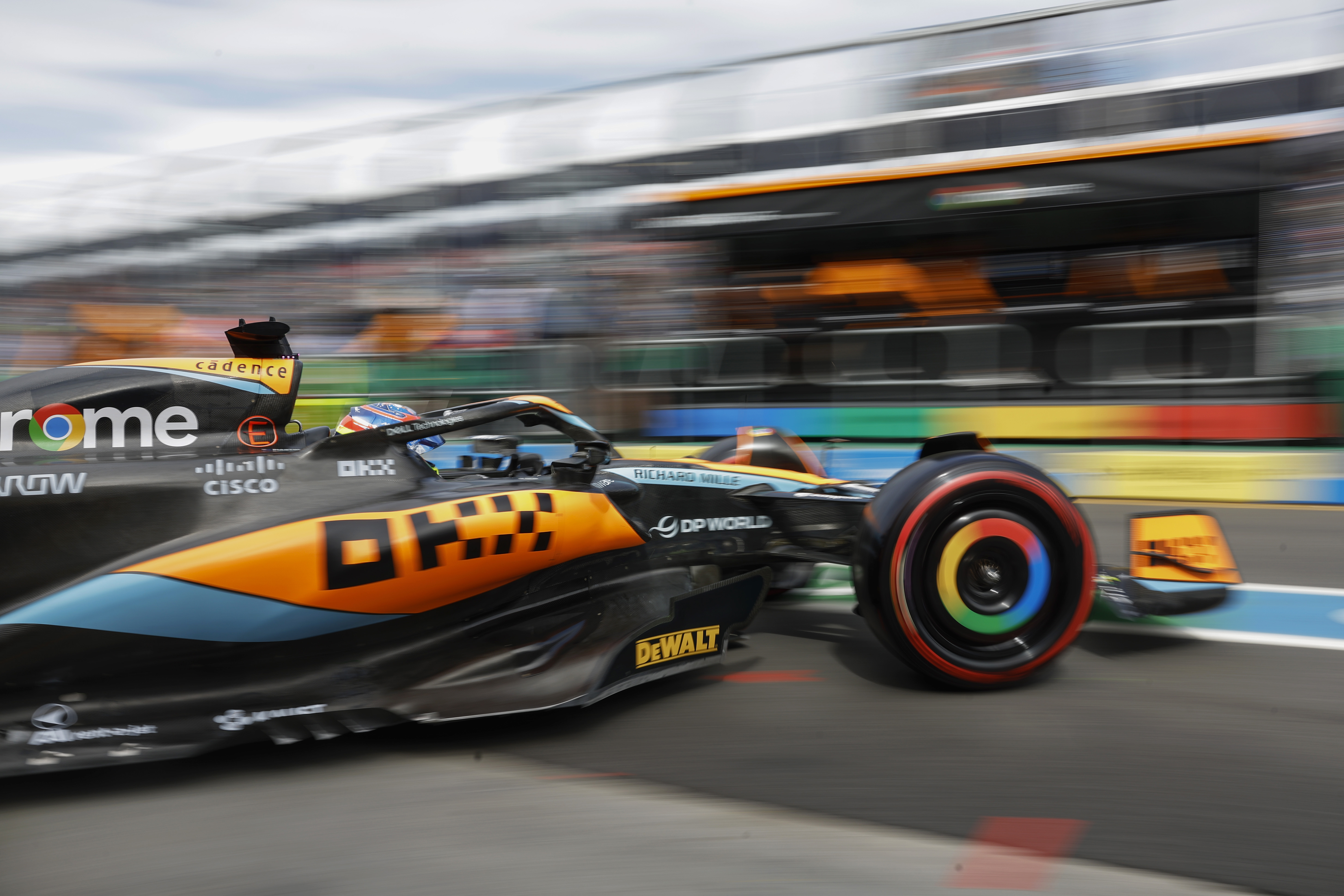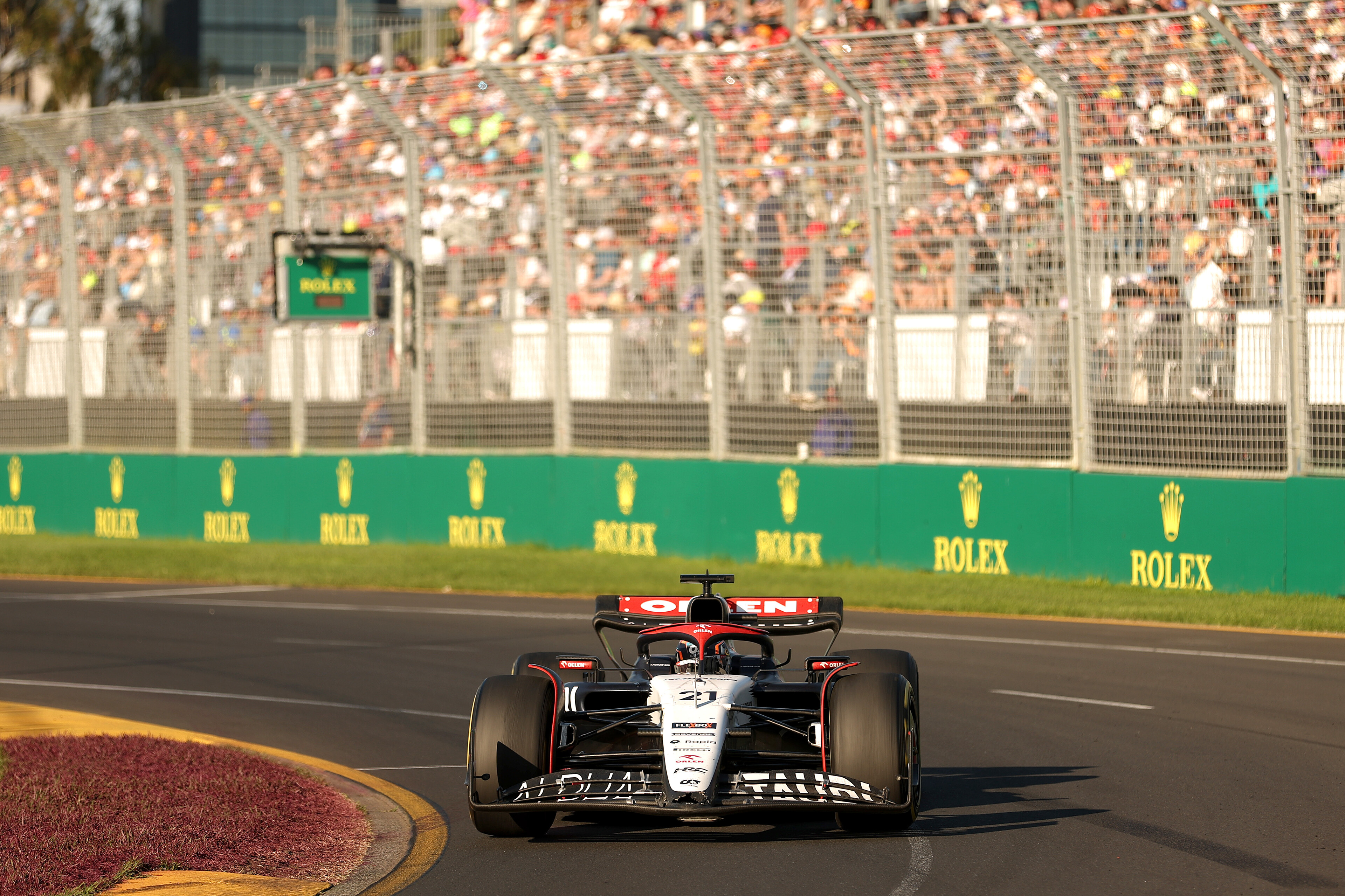Up Next

This year’s trio of Formula 1 rookies represents the most fascinating crop of newcomers since 2019, when Alex Albon, Lando Norris and George Russell came into grand prix racing.
With the three-race ‘mini-season’ now in the history books and a gap to the Azerbaijan Grand Prix, which has made the most positive impression?
While our choice for number one might not come as a surprise, he’s been run close by a driver who has had a stronger start to the year than the bare results suggest.
1 OSCAR PIASTRI

Piastri came into the season as arguably the most controversial rookie in F1 history thanks to the tug of war over his services between Alpine and McLaren. Unsurprisingly, that was won by McLaren once it emerged that Alpine had never signed Piastri on the deal it believed it had done.
Inevitably, that led to a few sneers when McLaren started the season poorly and Alpine was far more competitive. But Piastri broke his points duck with an assured drive to eighth in Australia and has shown serious pace at times, most significantly in Jeddah. There, he looked to have similar speed to Norris but didn’t have the chance to prove it in qualifying given Norris’s inside-wall-clipping incident. But reaching Q3 proved his speed.
But by and large, Piastri has stacked up well against Norris on single-lap pace. As team principal Andrea Stella put it in Australia, Piastri has been “close to Lando in most of the corners”. The difference in Bahrain, where he was 0.449 seconds slower in Q1, was down to an error at Turn 1 when he ran deep, while in Australia most of the 0.274s deficit was thanks to an error in the Turn 11 right-hander.
The races have been a mixed bag. In Bahrain, Piastri was eliminated early on by an electrical problem, then his Jeddah race was ruined after starting ninth when light contact with Pierre Gasly’s Alpine exiting the second corner led to wing damage that also ruined Norris’s race when he ran through the debris field.
Piastri didn’t cause that clash as it was Gasly who squeezed him – although it was correct that it was treated as a racing incident – but what was most encouraging was that the Australian recognised he could have put himself in a less risky position. As he put it, “I probably could have done a few things differently and maybe kept myself out of trouble a bit better”.
His race thereafter was solid, while in Australia he spent too long stuck behind Yuki Tsunoda’s AlphaTauri. That was something he recognised immediately after the race, and even once clear he didn’t have the same pace as Norris. But he kept his nose clean and was rewarded with the first tangible result of his F1 career.
Key area for improvement: Finding the right balance between attack and consolidation in races.
2 LOGAN SARGEANT

Sargeant’s season has been one of unfulfilled promise. While Alex Albon has claimed all the headlines for Williams, the 22-year-old has shown flashes of genuine pace and strong racecraft but has yet to piece together a ‘complete’ weekend that has yielded eye-catching results on paper.
The story of his three Q1s is similar. In Bahrain, he was caught out by changing wind conditions and lost time at the start of the lap. Even then, he set a time good enough for Q2, but he didn’t earn a place in it as Lando Norris had set an identical time – but did so earlier in the session.
In Saudi Arabia, he also set a time good enough for Q2 on his first flying lap. That was deleted for drifting beyond track limits on the blast to the line, a moment of inattentiveness that sent his qualifying spiralling with errors on his second and third run. He showed hints of Q2 pace again in Australia, albeit not at Albon’s level, with an error at the penultimate corner costing him.
So the pace is there. In fact, Sargeant suggested he was having a “perfect weekend” in Jeddah until it went wrong in Q1, and while that does indicate he tripped up as soon as the serious stuff started he did have the speed to have outqualified Albon. And given the Williams was strong in the race, that might have laid the foundations for points. Instead, Sargeant was 16th and just held off the recovering Norris.
His Australian race was ruined by misjudging the cold tyres and brakes at the final standing restart and rear-ending De Vries. But arguably his best race had been in Bahrain where he finished 12th after an attacking first lap.
It’s been far from perfect for Sargeant, who still has progress to make in the fast corners in particular where he can’t quite match Albon’s confidence, despite high-speed turns being a traditional strength of his. But if he can join the dots of those performance peaks he could be a formidable driver.
Key area for improvement: Turning his underlying pace into qualifying results.
3 NYCK DE VRIES

De Vries was comfortably the best-prepared of the rookie class of 2023, not only because of his points-scoring F1 debut at Monza last year but also because he’s a 28-year-old with title-winning manufacturer experience in Formula E whose first affiliation with an F1 team was with McLaren while still in karting way back in 2010. He’s comfortably the rookie with the most experience inside and outside of an F1 car.
The trouble is, he’s also the one in the weakest car given the AlphaTauri AT04 has proved not only to lack pace but also be tricky to get the best out of. This means that of the three rookies, he’s the one who has posed the least threat to his team-mate. He has also appeared to be less comfortable with the car on the limit than his team-mate has.
Yuki Tsunoda has outqualified De Vries in all three events, although it’s fair to say that De Vries left time on the table on all three occasions. In Bahrain, he was seven tenths off after a final lap that started to get away from him when he picked up some wheelspin in the transition from Turn 1 into Turn 2 – “it felt like they [the tyres] were not quite where I wanted them to be” was his conclusion. In Jeddah, the gap was three tenths although that was exaggerated by De Vries having a battery recharge “fuss” that cost him a couple of tenths.
In Australia, the gap was 0.236s after De Vries made an error at Turn 1 on his final lap. To that the caveat must be added that only De Vries was running the new-specification AlphaTauri floor, worth an estimated 0.15-0.2s with the gains in lower-speed corners, given Tsunoda damaged his example on Friday.
All this equates to an average deficit of 0.477% – unflattering to De Vries, who has proven his underlying pace is better than that.

His race pace in Bahrain was decent, although he was on the wrong side of the AlphaTauri split strategy when he was left out under the safety car. Although he was never going to score points, 14th place was a little lower than he merited. In Saudi Arabia, a poor first lap and struggles to manage the tyres while trying to make gains added up to another 14th place.
His Australian GP was “frustrating” thanks to light front wing damage sustained in a clash with Esteban Ocon that made it harder to manage the tyres. That wasn’t helped by starting on hards then changing to mediums under the early red flag, which made for a particularly trying stint. He was classified 15th after being rear-ended by Sargeant at the final standing restart.
Key area for improvement: Closing the gap to Tsunoda.







